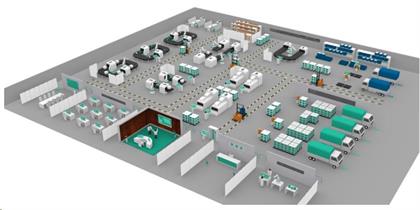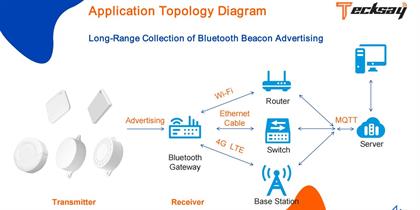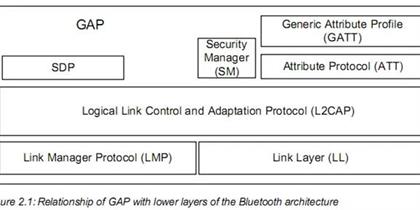
Bluetooth Beacons: Illuminating the Path to Warehouse Efficiency
September 30, 2024
![]()
In the vast and often labyrinthine environments of warehouses, navigating the complex maze of inventory, machinery, and personnel presents a formidable challenge. However, the advent of Bluetooth beacons has introduced a new era of efficiency and precision in warehouse management. These unobtrusive yet powerful devices are transforming the way warehouses operate, offering a beacon of light in the quest for optimal logistics.
The Role of Bluetooth Beacons in Warehouses
Bluetooth beacons are small, wireless transmitters that emit signals to nearby Bluetooth-enabled devices. In a warehouse setting, beacons can be deployed to track assets, guide personnel, and monitor environmental conditions. They serve as the eyes and ears of the warehouse, providing real-time data that can be used to streamline operations and enhance productivity.
Enhancing Asset Tracking
One of the primary applications of Bluetooth beacons in warehouses is asset tracking. By attaching beacons to inventory items, forklifts, or pallets, warehouse managers can track their location with pinpoint accuracy. This not only helps in reducing the time spent on locating items but also in preventing loss or theft.
Guiding Personnel
Bluetooth beacons can also be used to guide personnel within the warehouse. For example, beacons can be set up to direct workers to the most efficient route for completing their tasks, reducing unnecessary movement and improving workflow. Additionally, beacons can be used to ensure that workers are aware of safety protocols and restricted areas.
Monitoring Environmental Conditions
Warehouses often require strict environmental controls to maintain the integrity of stored goods. Bluetooth beacons, integrated with sensors, can monitor conditions such as temperature, humidity, and light exposure. These beacons can trigger alerts if conditions fall outside of predefined parameters, ensuring that perishable goods are protected and that the warehouse environment remains safe for workers.
Optimizing Space Utilization
By providing detailed data on the location of assets, Bluetooth beacons can help in optimizing the use of warehouse space. They can assist in identifying underutilized areas and in implementing more efficient storage solutions, such as just-in-time inventory systems.
The Implementation Process
The process of implementing Bluetooth beacons in a warehouse involves several steps:
- Planning: Identify the areas where beacons will be most beneficial, such as high-traffic routes, storage areas, or loading docks.
- Deployment: Install the beacons at strategic locations throughout the warehouse. This may involve mounting them on walls, ceilings, or even on mobile equipment.
- Integration: Integrate the beacons with the warehouse management system (WMS) to ensure that the data they collect is captured and analyzed effectively.
- Testing: Test the system to ensure that the beacons are transmitting accurately and that the WMS is responding appropriately to the data.
- Training: Train warehouse staff on how to interact with the new system and how to interpret the data provided by the beacons.
Challenges and Considerations
Despite their potential, there are challenges to implementing Bluetooth beacons in a warehouse environment:
- Infrastructure Compatibility: Ensuring that the existing warehouse infrastructure can support the new technology is crucial.
- Data Security: Protecting the data transmitted by beacons from unauthorized access is a significant concern.
- Battery Life: Beacons rely on batteries, which will need to be replaced periodically. The cost and effort of maintaining these devices should be considered.
The Future of Bluetooth Beacons in Warehouses
As technology continues to advance, the capabilities of Bluetooth beacons are expected to expand. Future beacons may offer improved data processing capabilities, enhanced security features, and more sophisticated analytics, further solidifying their role in warehouse management.
Conclusion
Bluetooth beacons are more than just a technological advancement; they are a key component in the evolution of warehouse management. By providing real-time data and insights, these devices empower warehouse managers to make informed decisions that can transform their operations. As the world continues to embrace the Internet of Things (IoT), the role of Bluetooth beacons in warehouses is set to become even more pivotal, ensuring that warehouses remain at the forefront of efficiency and innovation.
Leave a Reply
Related Products
You Might Like Also

In the dynamic landscape of retail, customer engagement and satisfaction are paramount. As the physical and digital worlds collide, Bluetooth beacons have emerged as a pivotal tool in creating smart retail environments. These small, unassuming devices are transforming the way retailers interact with customers, offering a new level of personalizatio Read More

Bluetooth beacons are low-energy broadcasting devices that emit signals to nearby Bluetooth-enabled devices. In a smart factory, beacons serve as the nervous system, providing real-time location-based services and data collection that drive efficiency and innovation. Read More

In the modern agricultural landscape, the integration of technology is not just a trend; it’s a necessity. As the global population continues to grow, the demand for food outpaces traditional farming methods. This is where the Internet of Things (IoT) steps in, with Bluetooth beacons playing a pivotal role in revolutionizing the way we approach agr Read More

The story of BLE beacons begins with the introduction of BLE technology, which offered a new paradigm of wireless communication characterized by low power consumption and high efficiency. BLE beacons, initially developed as a part of Apple’s iBeacon in 2013, were designed to leverage the BLE protocol to broadcast signals to nearby devices, paving t Read More

In the intricate world of wireless communication, Bluetooth Low Energy beacons (BLE Beacons) play a pivotal role, particularly when it comes to connecting with gateways. These small yet powerful devices use the BLE protocol to transmit data, which can then be received and processed by a BLE gateway. The interaction between BLE beacons and gateways Read More

In the realm of Bluetooth Low Energy (BLE) technology, the link layer stands as the silent sentinel, weaving the fabric of connectivity between devices. It is the unsung hero, operating behind the scenes to ensure seamless and efficient data exchange. This article delves into the intricacies of the BLE link layer, exploring its role, functionalitie Read More











